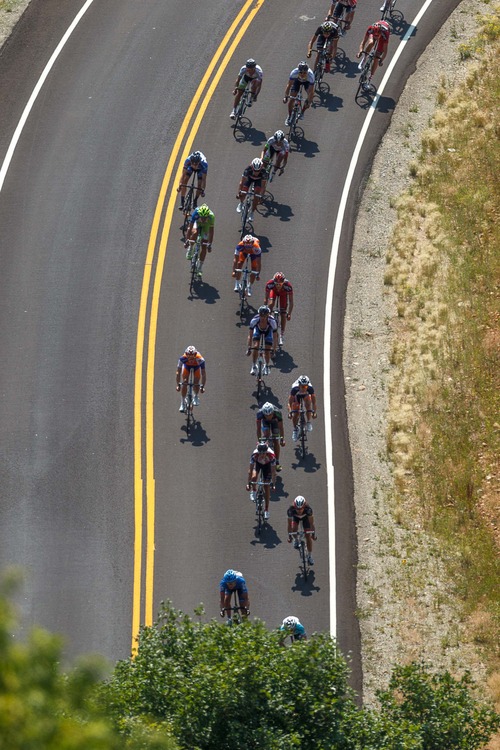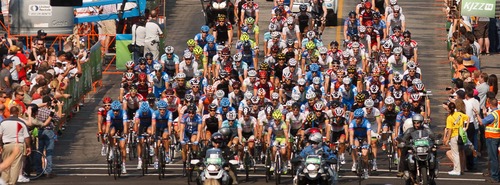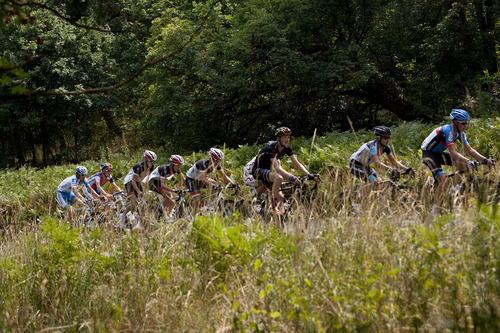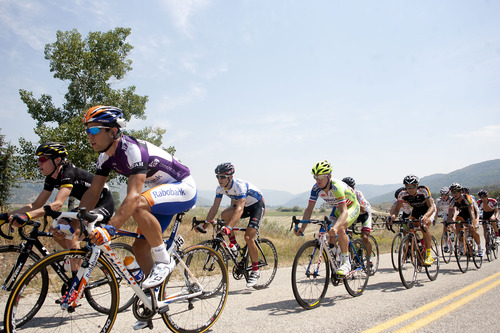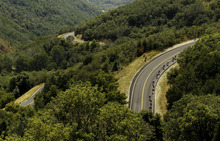This is an archived article that was published on sltrib.com in 2013, and information in the article may be outdated. It is provided only for personal research purposes and may not be reprinted.
There was a knock at the door at 7 a.m.
Park City's Tanner Putt, the U23 U.S. National Road Race Champion who is in his first year with the Bontrager Cycling Team, suddenly had to prep for another round of dealing with life as a professional cyclist.
On the other side of the door were representatives of the United States Anti-Doping Agency, who were up bright and early to ensure — to the best of their abilities — that the sport and its riders often marred with accounts of blood doping stay as clean as possible.
That knock has come more than a few times, according to Putt.
As the Beehive State prepares for its eighth Larry H. Miller Tour of Utah set to begin Tuesday, a stage race growing in popularity and reeling in worldwide talent, the question is: How does this race do its best to ensure no doping?
"Every day you have to email USADA and tell them where you're at," said Putt, who is preparing for his second Tour of Utah race. "There's a lot of stuff that comes with being in this race circuit. … [USADA] can come at any time."
In its best attempt to curb cheating and doping, the Tour of Utah has anti-doping control daily, per regulations set by the International Cycling Union, cycling's world governing body. As a sanctioned North American UCI race, the Tour of Utah follows the guidelines set by the UCI for its anti-doping guidelines.
Riders guaranteed to be tested daily through either blood or urine are the general classification leader after each stage concludes and at least two riders selected by the DCO (Doping Control Officer). Additional riders may be tested after the stage finish. Each competitor who appears on the list of riders to be tested is required to appear with his UCI race license and an accompanying photo identification card. The rider to be tested may be accompanied by one attendant or an interpreter, should one be needed.
At the Tour of Utah, riders are to proceed to the Doping Control Station as quickly as they can after their stage finish. Some riders who are part of the daily awards ceremony have 30 minutes from the ceremony's conclusion to get to the station.
Others who attend the post-race news conference have 30 minutes from the end of the ceremony or time they no longer are required at the news conference.
As USA Cycling President and CEO Steve Johnson explained, testing in the United States differs from overseas. The United States Anti-Doping Agency, which is separate from the national governing body of the sport, handles the testing in the U.S.
"We use the analogy of the fox guarding the hen house," Johnson said.
Johnson said the organization has done its due diligence in recent years to work with USADA very closely for proper testing and education of riders of all ages and abilities to ensure the sport stays on the right track.
"We need to carry the message more to rank and file," he said.
Utah native Jeff Louder has been a mainstay in the Tour of Utah since it began. He won the race in 2008 and is prepping for another go at podiums and yellow jerseys.
He said the questions always will be there about how the sport and certain tours prepare for potential dopers, but he chooses to focus on what's ahead for the sport.
"It's easy to stay positive when you look at the young riders coming up and the young teams forming," Louder said. "They have a more progressive attitude and aren't based in the past. It's easy, day-to-day, to be a professional cyclist. At its essence, it's still exactly what it's always been: It's an amazingly tough road to ride."
Twitter: @chriskamrani —
Larry H. Miller Tour of Utah Anti-Doping guidelines
Tour of Utah has anti-doping control daily per regulations of the UCI. Following each stage, the following riders will be tested:
• The general classification leader after the stage.
• At least two riders selected by the Doping Control Officer (DCO).
• Additional riders may be tested after the stage finish.
• For the mass start road races, the list of riders to be tested will be posted each day near the stage finish line and also at the entrance of the Doping Control Station (DCS). It is the rider's responsibility to check if his name is on the list.
• All riders who appear on the list of riders to be tested are required to appear with their UCI race license and a photo ID. A rider may be accompanied by one attendant and, if necessary, an interpreter.
• Once a rider's name is put on the list as a general classification leader, stage winner or random rider, only the Doping Control Officer can tell the rider that he is not needed for testing.
• Testing for all stages will take place in a recreational vehicle, the DCS. —
Tour of Utah schedule
Tuesday, Aug. 6 • Brian Head to Cedar City
Wednesday, Aug. 7 • Panguitch to Torrey
Thursday, Aug. 8 • Richfield to Payson
Friday, Aug. 9 • Salt Lake City circuit
Saturday, Aug. 10 • Snowbasin to Snowbird
Sunday, Aug. 11 • Park City to Park City


